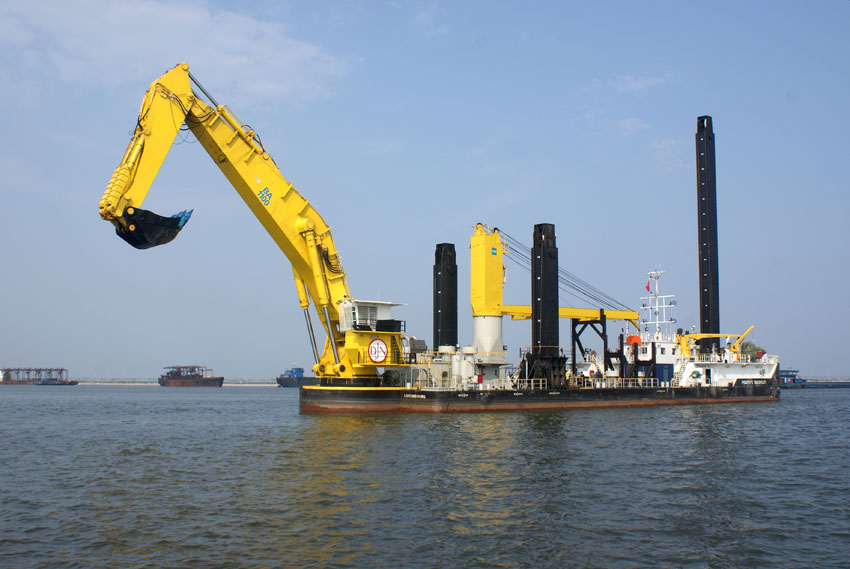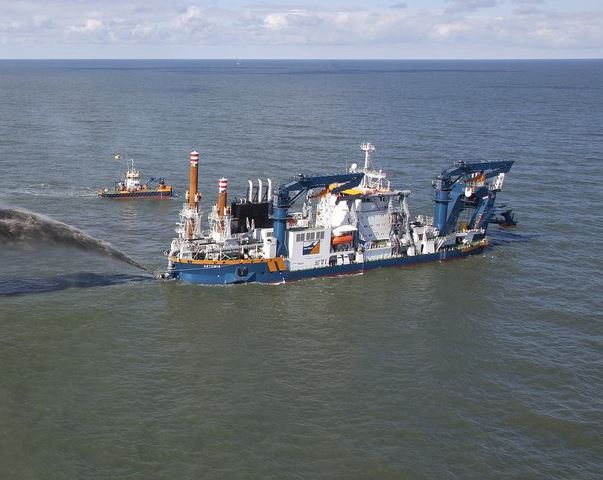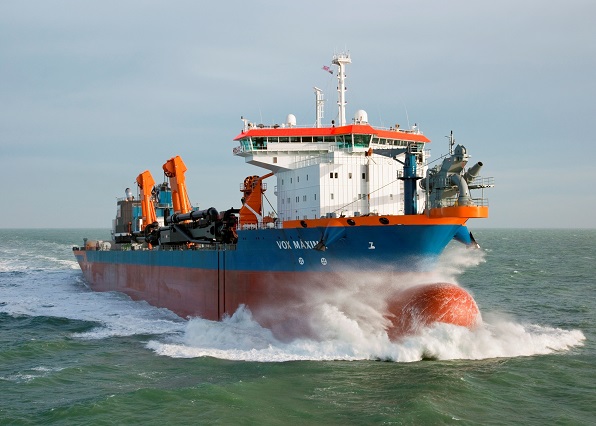 |
 |
||
| Offshore Fleet | ||||||||||||
| Dredging Fleet | ||||||||||||
| Backhoe Dredger
A backhoe is a type of grab crane dredging pontoon. It consists of a hydraulic grab crane mounted on a dredging pontoon. The dredging pontoon is usually held in place by three spud poles. Backhoes are used to dredge heavy clay, soft stone, blast rock and soil thought to contain boulders, for example in foreshore protection operations.
Backhoe Dredger
Cutter Suction Dredger A cutter suction dredger is a stationary or self-propelled vessel that uses a rotating cutter head to loosen the material in the bed (‘cutting’). A suction inlet located beneath the cutter head (known as the suction mouth) is connected by a suction tube directly to one or more centrifugal pumps. The vacuum force at the suction inlet sucks up the loosened material. The suction tube and cutter head are attached to a ladder. The ladder with cutter head is positioned at the fore of the vessel. On the aft side, the cutter generally has two spud poles. One spud pole (the auxiliary spud) passes straight through the vessel, while the other is mounted on a movable spud carriage, which can be moved lengthwise along the vessel or pontoon. Steel cables are used to move the ladder or cutter head back and forth, with the spud in the spud carriage as the centre of each concentric circle that it describes. Moving the spud carriage causes the cutter suction dredger to move as well (‘stepping’). The cutter suction dredger discharges the dredged material directly to shore via a floating pipeline or into a barge with a special loading system.
Van Oord: Dredger “Artemis” Commissioned (The Netherlands)
Cutter Suction Dredger Castor from Van Oord on Vimeo
A trailing suction hopper dredger has large, powerful pumps and engines that enable it to suck up sand, clay, sludge and even gravel from ocean or river beds. One or two suction pipes run from the vessel to the bed. A draghead is attached to the end of the pipe and lowered to just above the bed, making it possible to regulate the mixture of sand and water that it takes in. A trailing suction hopper dredger generally stores the dredged material in its own hopper and discharges the left-over water overboard.
Van Oord: TSHD “Vox Maxima” Water injection dredger Water injection dredgers are often used in small, shallow ports and marinas because they have good manoeuvrability and can dredge very close to embankments and quay walls. An injection beam located underneath the vessel injects large volumes of water under low pressure into silt or fine sand in order to resuspend it. The sediment mixture turns into a density current, which is then removed with the help of gravity.
Source: VanOord.com |
||||||||||||
| « Back to all Offshore Fleet | ||||||||||||

|
|
 |
|
|
||||||||||||


